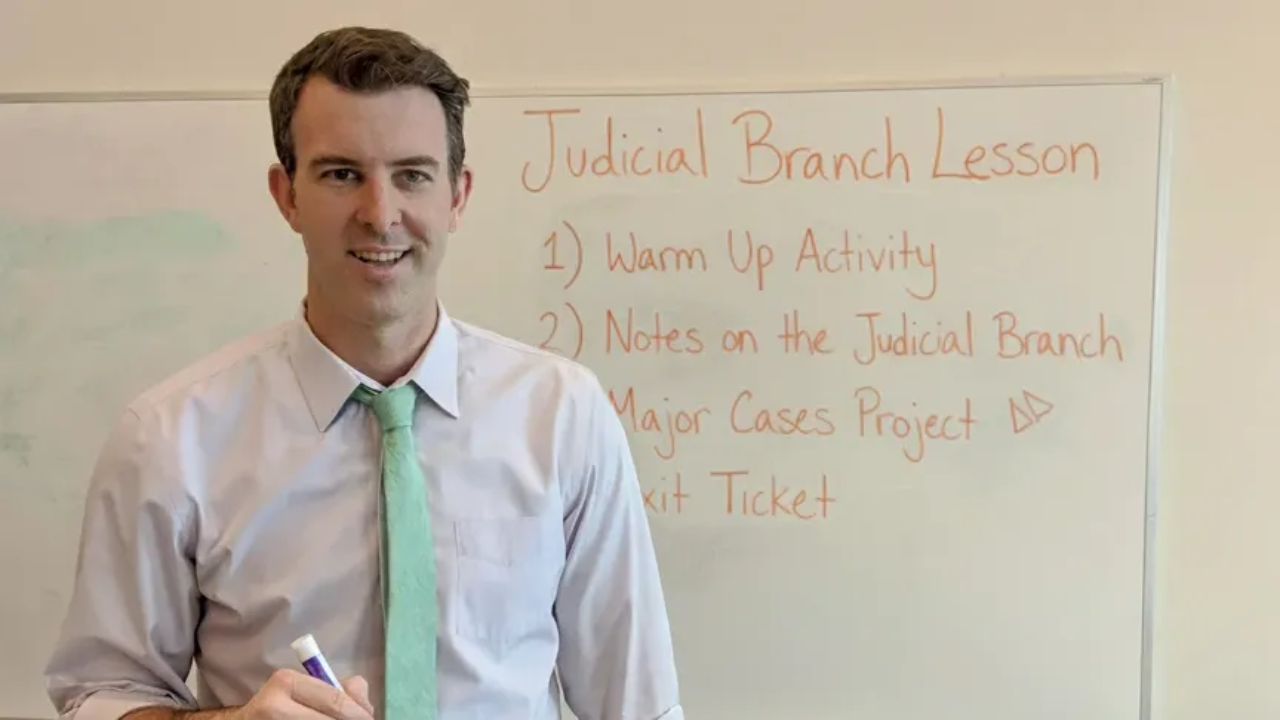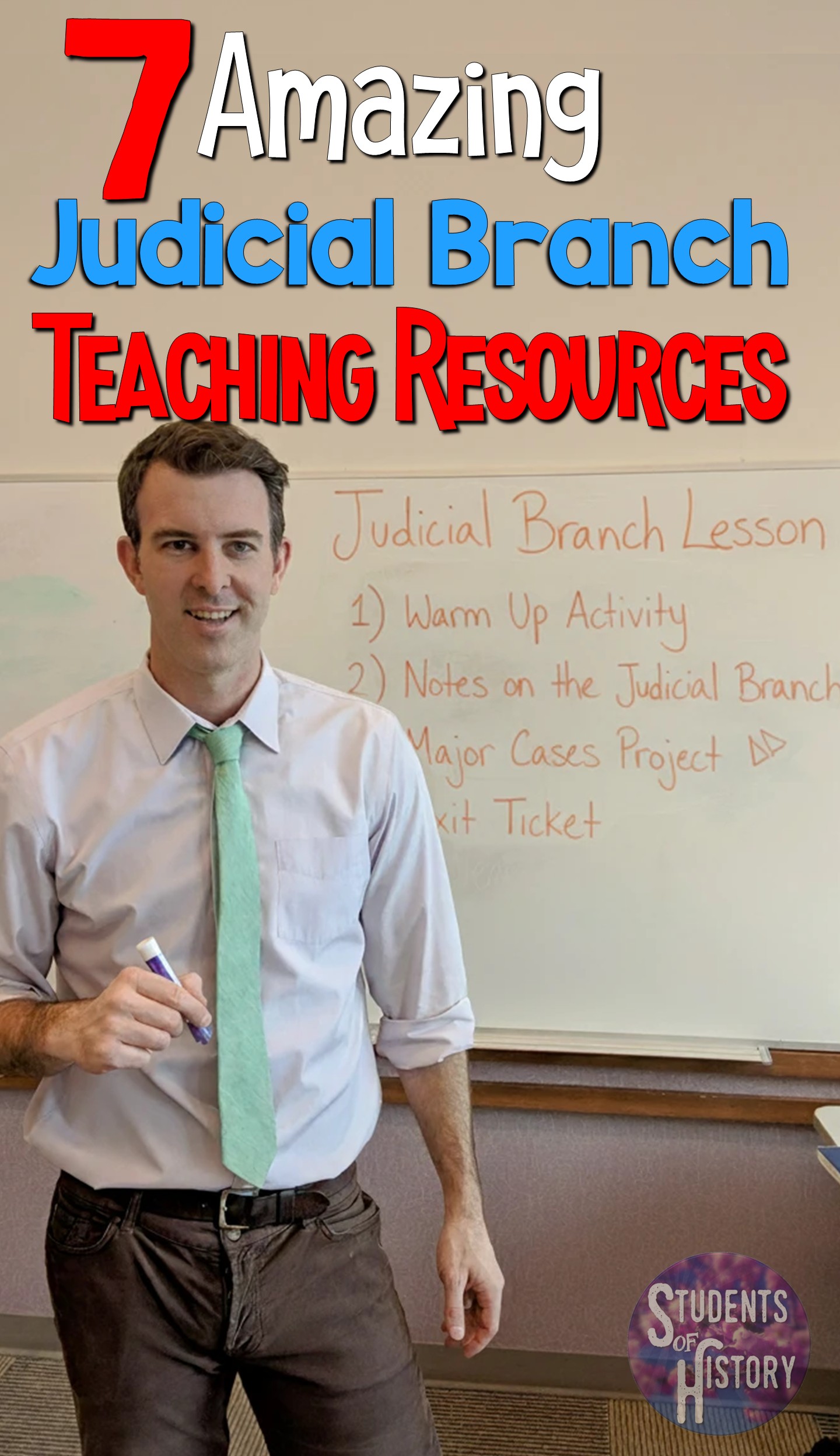Engaging Resources for Teaching About the Judicial Branch

If you’re teaching about the Judicial Branch in your Civics or American Government class, you know it's important to go beyond memorizing the structure of the courts. Students learn best when they see how the judicial system actually works through real cases, interactive projects, and activities that bring the Constitution to life.
Here are 7 teacher-approved resources that build engagement, support critical thinking, and work perfectly in both middle and high school government or civics classrooms. Each one links directly to a ready-to-use activity you can download and teach right away.
Use this as your go-to list for ramping up your Judicial Branch instruction.
7 Activities for Teaching About the Judicial Branch
1. Judicial Branch Study Guide and Unit Packet
This thorough packet walks students through the structure and powers of the federal court system, including the Supreme Court, appeals courts, and district courts.
For middle school, I like to assign one page at a time as we progress through the unit. For high school, you can usually give the entire packet to kids at the start of the unit and then allow them to work on in independently. Then, have them turn it in to grade while they are taking the unit test.
It's a great resource because students gain a clear, organized overview of how the judicial system operates all in one packet.
2. Citizens United Supreme Court Case Analysis Lesson
Few Supreme Court decisions have shaped modern politics as much as Citizens United v. FEC. This resource helps students analyze the background, majority opinion, dissenting opinion, and long-term effects of the ruling.
For your middle school kids, provide excerpts and guided questions. For high school, have students debate whether corporations should be treated as individuals under the First Amendment.
Students connect constitutional principles to real-world political issues, helping them understand the ongoing impact of Supreme Court decisions.
3. Supreme Court Case Project Based Learning
Project-based learning is a fantastic way to deepen understanding. In this PBL activity, students research a landmark Supreme Court case, analyze its impact, and present their findings creatively. This can be done through slideshows, posters, a blog, podcast, video, or skit.
For middle school, select a list of cases for students to choose from. For high school, let them select and research their own case. This way, students take ownership of their learning and gain insight into how the Supreme Court shapes American life.
4. Judicial Branch Google Drive Digital Notebook
This fully digital notebook includes interactive slides, drag-and-drop activities, videos, and links that make learning about the courts accessible and engaging.
Perfect for blended or 1:1 classrooms — students can complete it individually or in pairs. Teachers can easily assign and grade it through Google Classroom.
Why it matters: The digital format builds 21st-century learning skills while helping students visualize the judicial process.
5. Loving v. Virginia Civil Rights Supreme Court Case Reading
This reading explores one of the most important civil rights cases in American history — Loving v. Virginia (1967), which struck down bans on interracial marriage.
For middle school, read the passage aloud and discuss how the case connects to equal protection under the 14th Amendment. For high school, pair the reading with other civil rights cases to trace the evolution of equality under the law.
Why it matters: It makes constitutional law personal and human, helping students see how Supreme Court decisions change lives.
6. Supreme Court & Civil Rights Reading Worksheet
This worksheet introduces students to multiple landmark cases that shaped the Civil Rights Movement, including Brown v. Board of Education, Miranda v. Arizona, and Roe v. Wade.
Use it as a warm-up, bell ringer, or exit ticket to reinforce key court decisions. For advanced students, have them compare how different rulings interpret constitutional rights.
Why it matters: Helps students make direct connections between the Judicial Branch and the broader story of civil rights in America.
7. Judicial Branch Complete Unit Plan Bundle
If you want everything planned for you, this comprehensive unit plan includes daily lesson plans, PowerPoints, activities, worksheets, and assessments — everything you need to teach the Judicial Branch from start to finish.
You’ll cover the structure of the federal courts, judicial review, landmark cases, and how the Judicial Branch interacts with the Executive and Legislative Branches.
Why it matters: Saves you hours of prep time and ensures your unit is both rigorous and engaging.
Conclusion
If you’re searching for “Judicial Branch lesson plans,” “Supreme Court activities,” “Civics classroom ideas,” or “middle and high school government resources,” the materials above provide everything you need to make your unit engaging, standards-aligned, and easy to teach.
Whether you’re teaching a one-day case study, a weeklong unit, or even a complete government course or curriculum, these ready-to-use lessons will bring the Constitution and the courts to life for your students.
Don’t wait until the night before you have to explain to your kids about judicial review! Bookmark this post, explore the links now, or grab the complete Judicial Branch Unit Plan to have every resource ready at your fingertips!

Want to try some lessons for free?
Try out some free lesson plans and resources for your social studies classroom!
Don't worry, your information is never shared.